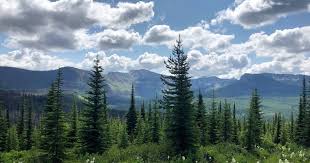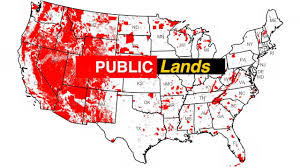Federal Public Lands: America’s Treasures and Challenges

From the soaring peaks of the Rocky Mountains to the widespread stretches of pristine wilderness within the American Southwest, the USA is home to a beautiful array of natural landscapes and ecosystems. Many of these herbal wonders are blanketed and managed by the federal authorities as federal public lands. In this complete article, we will explore the numerous forms of federal public lands, their significance, the demanding situations they face, and the efforts to keep those national treasures for generations to come.
Understanding Federal Public Lands

Federal public lands are areas owned and managed with the aid of the federal government, mainly the USA Department of the Interior and the US Department of Agriculture. These lands embody a wide range of ecosystems, which include:
- National Parks: The crown jewels of America’s public lands, country-wide parks, which include Yellowstone, Yosemite, and the Grand Canyon, are appreciated for their scenic, medical, and historic significance.
- National Forests: Managed with the aid of the U.S. Forest Service, countrywide forests cover considerable expanses of desolate tracts and provide leisure opportunities, timber sources, and wildlife habitats.
- National Wildlife Refuges: These areas are managed by the U.S. Fish and Wildlife Service and provide vital habitats for hundreds of species of flora and fauna, consisting of migratory birds, endangered species, and aquatic lifestyles.
- Bureau of Land Management (BLM) Lands: The BLM oversees diverse landscapes, together with deserts, forests, and grasslands. BLM lands are often used for quite a few functions, together with grazing, mineral extraction, and endeavor.
- National Monuments: National monuments are designated by the President of the US to guard widespread natural, cultural, or ancient sources. Iconic examples encompass the Statue of Liberty and the Muir Woods National Monument.
The Importance of Federal Public Lands
Federal public lands play an essential role in preserving the state’s herbal heritage and provide many benefits:

- Conservation of Biodiversity: These lands harbor a high-quality diversity of plant and animal species, many of which are rare, threatened, or endangered. Protected habitats help ensure the survival of those species.
- Recreation and Tourism: Federal public lands offer countless leisure opportunities, from hiking and camping to fishing and natural world viewing. The tourism generated via these activities contributes drastically to local economies.
- Natural Resource Management: Public lands supply treasured natural sources, along with wood, minerals, and clean water. Proper management guarantees sustainable use while also safeguarding the environment.
- Scientific Research: These lands offer a unique opportunity for scientific research in regions that include ecology, geology, and climatology. Scientific discoveries made on public lands make contributions to our knowledge of the natural world.
- Cultural and Historical Preservation: Many public lands maintain cultural and historical significance, preserving the history of Indigenous peoples and early settlers.
Challenges Facing Federal Public Lands
While federal public lands are cherished for their natural beauty and conservation, they face several sizeable and demanding situations:

- Overcrowding and Degradation: Popular national parks and recreation lands are often afflicted by overcrowding, leading to environmental degradation, which includes soil erosion, habitat destruction, and littering.
- Climate Change: Federal public lands are not immune against the results of changing climates, which encompass altered ecosystems, accelerated wildfires, and the lack of iconic features like glaciers in countrywide parks.
- Resource Extraction: Balancing conservation and resources, together with oil and gasoline drilling, mining, and logging, stands as an ongoing problem.
- Invasive Species: Invasive species can disrupt ecosystems and threaten local plants and fauna. Controlling those species requires tremendous effort and assets.
- Budget Constraints: Federal agencies responsible for handling public lands often face financial constraints, limiting their capability to maintain lands’ infrastructure and provide tourist services.
Conservation and Preservation Efforts
Efforts to overcome these challenging situations and maintain federal public lands for future generations are ongoing:

- Education and Visitor Management: Many groups prioritize instructing visitors about accountable recreation and imposing measures to control and mitigate overcrowding.
- Climate Resilience: Federal groups are working to adapt public lands to the changing climate by imposing conservation techniques such as restoring degraded habitats and mitigating wildfire dangers.
- Sustainable Resource Management: There is a developing emphasis on sustainable aid control, balancing the extraction of resources with environmental safety and sustainability.
- Invasive Species Control: Agencies are actively worried about controlling invasive species via strategies together with biological management and habitat restoration.
- Advocacy and Conservation Organizations: Numerous nonprofit organizations and advocacy corporations work tirelessly to guard federal public lands, advocating for regulations that provide their protection.
Federal public lands are a treasure trove of herbal splendor, biodiversity, and cultural legacy. They play a central role in maintaining America’s unique landscapes and offer a multitude of benefits to society. However, the demanding situations they face, from overcrowding to useful resource extraction and climate change, necessitate ongoing efforts to safeguard their future. Through responsible control, conservation, and public engagement, those lands can continue to encourage and inspire generations to come back while also serving as a final testament to the country’s commitment to environmental stewardship and the preservation of its herbal and cultural legacy.